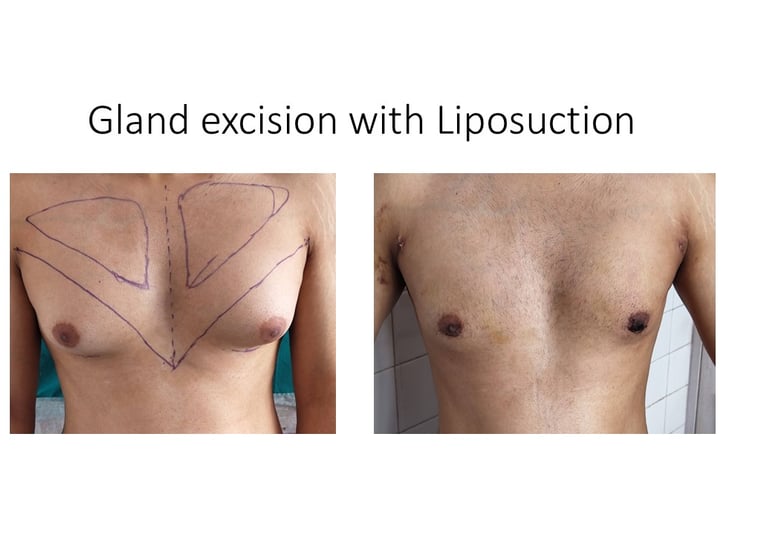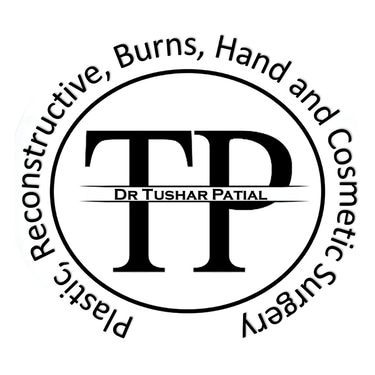Understanding Gynecomastia: Causes, Symptoms & Treatment
Gynecomastia treatment in Mohali
Dr. Tushar Patial | MCh Plastic & Reconstructive Surgery
5/7/20252 min read


What Is Gynecomastia?
Gynecomastia is a common yet often misunderstood condition characterized by the enlargement of male breast tissue. It can affect one or both breasts, sometimes unevenly. While not usually a serious health concern, gynecomastia can cause emotional distress and impact self-esteem, especially in adolescents and adult men.
Causes of Gynecomastia
Gynecomastia occurs due to an imbalance between the hormones estrogen and testosterone. A range of factors may contribute to this imbalance:
Puberty: Hormonal changes during adolescence often lead to temporary gynecomastia, which usually resolves on its own.
Aging: Hormone levels fluctuate with age, especially in men over 50.
Medications: Certain drugs for ulcers, anxiety, heart conditions, and anabolic steroids may lead to breast enlargement.
Health Conditions: Liver disease, kidney failure, thyroid disorders, and tumors can disturb hormone levels.
Substance Use: Alcohol, marijuana, and some recreational drugs can trigger or worsen gynecomastia.
Signs & Symptoms
Swollen breast gland tissue
Breast tenderness or discomfort
Firm or rubbery mass beneath the nipple area
Asymmetrical enlargement in one breast
If you notice persistent breast enlargement or pain, a consultation with a qualified specialist is advisable.
Treatment Options
At my practice in Mohali, I offer evidence-based, tailored solutions for gynecomastia based on its severity and underlying cause.
Observation: In mild cases, especially in teens, the condition often resolves without intervention.
Medical Management: Hormone therapy may be considered in selected cases.
Surgical Treatment:
Liposuction: Removes excess fat from the chest area.
Excision Surgery: Removes glandular tissue and corrects any excess skin.
Combination Technique: Often used for optimal contour and symmetry.
Gynecomastia surgery is a safe and effective outpatient procedure, performed under local or general anesthesia, with minimal downtime and lasting results.
Recovery & Results
Most patients return to their routine within a few days, with full recovery over 4–6 weeks. A compression garment is usually recommended to reduce swelling and support healing. Results are typically long-lasting, especially when coupled with a healthy lifestyle.
Why Choose Dr. Tushar Patial?
With advanced surgical training and years of experience in aesthetic and reconstructive procedures, I am committed to delivering natural-looking results in a safe and compassionate environment. I take time to understand each patient’s concerns and goals before crafting a personalized treatment plan.
Final Thoughts
Gynecomastia is more common than you think—and highly treatable. If you or a loved one is dealing with this condition, know that help is available. A confidential consultation can provide clarity and confidence on the next steps.


